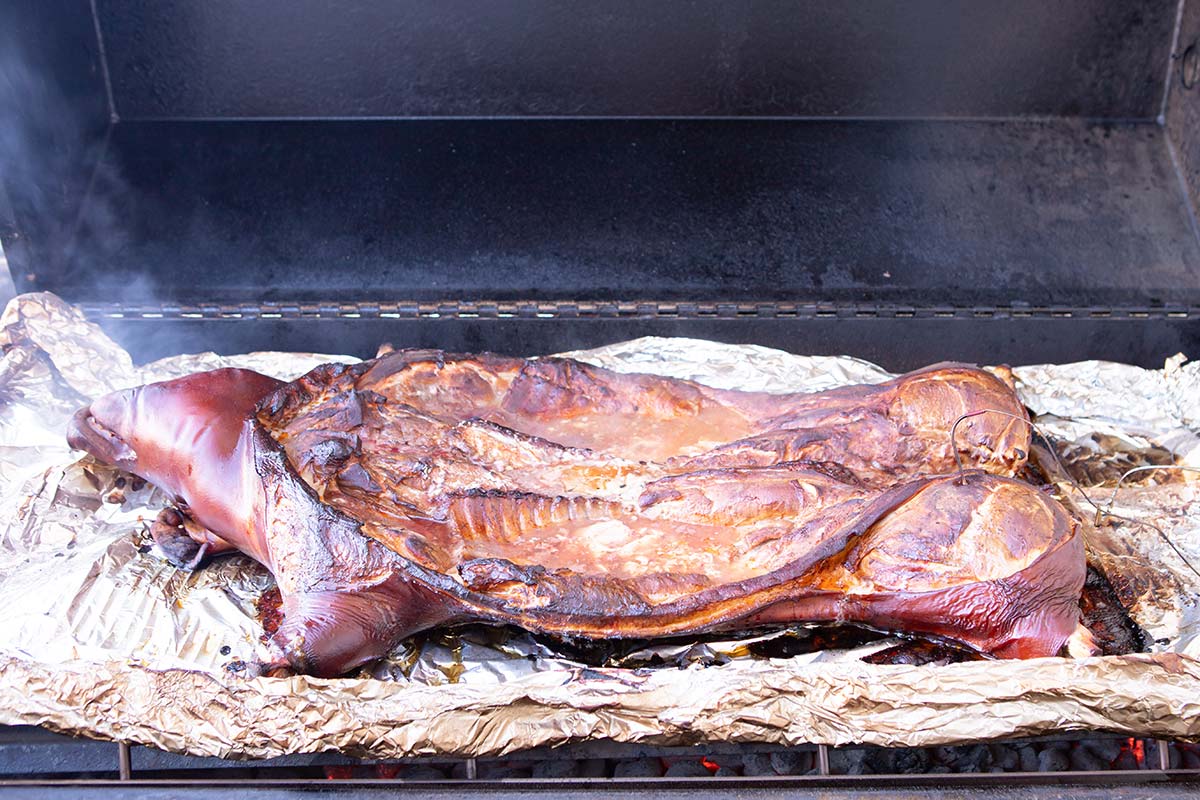In this guide you will learn how to cook a whole pig belly-up on a Meadow Creek Pig Roaster and make some of the most tender and delicious pulled pork you've ever tasted—even on your first try!
Cooking a whole pig can feel daunting because there are many different ways to do it and tackling an entire animal feels more complicated than doing a rack of ribs or a brisket. In this article we want to show you how easy it can be to successfully cook a whole pig.
Want some one-on-one help? If you'd like to talk with someone in person about cooking a whole pig, we'd love to help! Come see us at 140 W. Main Street in New Holland, Pennsylvania during store hours (see bottom of this page) or call us at (717) 355-0779. Jesse and Matt can expertly guide you in every part of the cooking process.

How to Cook a Whole Pig
Below we will explain these steps in detail.

In this cook, we are using a Meadow Creek PR60T Pig Roaster Trailer fired at 275 degrees F with 60–70 pounds of Chef's Select 100% hardwood briquettes. Simplifying the process starts with having a Meadow Creek Pig Roaster. People have said that their Meadow Creek Pig Roaster cooks pigs more evenly than any other roaster they have used, and these roasters really do make the process easy!
The pig we're cooking here weighed 85 pounds and was purchased from Martin's Custom Butchering, a local butcher shop in New Holland. The pig was "butterflied", injected, and seasoned in advance, so the morning of the cook, we only had to take it out of the cooler and set it on the cooker.
Cooking a pig belly-up doesn't have the presentation appeal of a whole pig in a crouched position, but this method lets the skin contain more of the juices as it cooks and exposes more of the meat to the smoke, so we believe it makes more juicy and tasty pulled pork.
We put the pig on at 6:45 am and it was done at 4:15 pm, so the cook took 9-1/2 hours.
Order the Pig
If you are ordering a pig to cook belly-up like this, ask the butcher for a dressed pig with the skin on and scalded, the head on, the feet removed, and the breastbone split so that it can lie flat on its back.
A pig under 100 pounds is the perfect size to start with, because it lets you get a feel of cooking a pig without committing to the extra work and time it takes to cook a full grown pig. If you're just starting out, we recommend doing one that you can start in the morning and finish in the afternoon instead of cooking it all night.
The PR60T Pig Roaster holds up to a 200-pound pig, but we prefer pigs in the 150-pound range because the bigger ones usually have a lot of excess fat.
We buy our pigs from Martin's Custom Butchering here in New Holland. If you're local, give them a call at (717) 355-9601 to order a pig.
Inject the Pig
While injecting is optional, it's a good way to boost the flavor of the meat and make your pork stand out from the crowd. We carry several pork injections that would be delicious to use:
You can browse all of our injections here.
Season the Pig
A delicious seasoning for a whole pig is a mixture of equal parts of the three seasonings listed below. We've often used this combination on pork and gotten many positive comments on it. Combine the three rubs in a shaker and apply a liberal coat to the exposed meat on the pig.
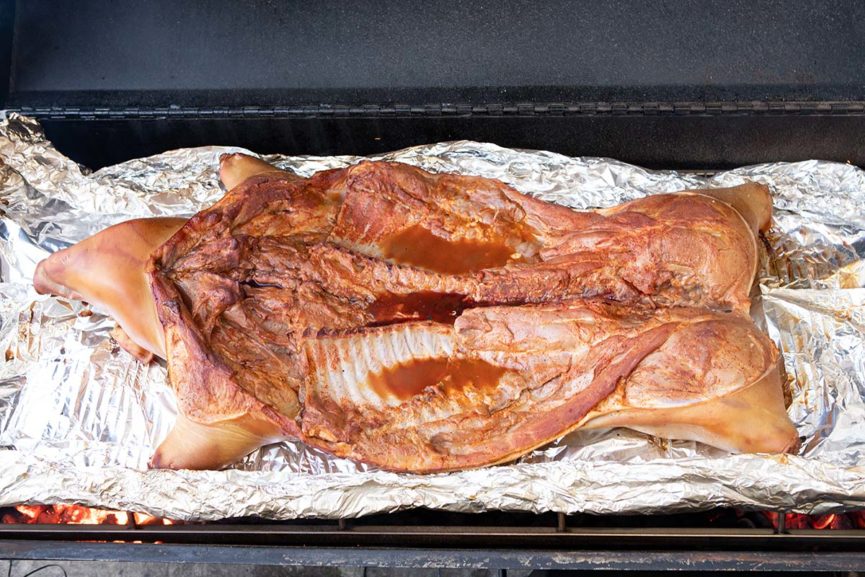
Fire the Cooker
If you're using a Meadow Creek charcoal-fired pig roaster, remove the cooking grate and drip pan. Spread 100% hardwood charcoal briquettes and a couple of log splits (smoking wood) in the bottom of the roaster. The amount of charcoal you use will depend on the outside temperature and how long the cook will take. For example, 80 pounds of Royal Oak Chef's Select 100% hardwood briquettes should be enough to last 14–16 hours. In this cook, 60–70 pounds of charcoal was more than enough to cook this pig for 9-1/2 hours.
Light the charcoal in both ends with a propane torch. Replace the drip pan and cooking grate and close the lid with the top and bottom vents open all the way.
For this cook, our target temperature was 275 degrees F. You can cook whole pigs at 275–300 degrees.
Without a Flame Boss: Once the roaster gets within 15 degrees of your target temperature, close both bottom sliding vents to 1" open. If you have a pullout with the round vents on one end, close those vents to the halfway open position. If the roaster temperature rises above your target temperature, adjust the top vents a little bit at a time to stabilize and maintain the target temperature. Start by adjusting one top vent on each end to the 3/4 open position. A little adjustment on the top vents makes a big difference.
With a Flame Boss: In this cook, we used a Flame Boss to simplify temperature control. After lighting the charcoal, clip the temperature probe onto the cooking grate and close the lid with the vents open all the way, just as you would when firing it without the Flame Boss. When the roasters gets within 15 degrees of your target temperature, hook up the flame boss, and close all the vents. Set the Flame Boss to your target temperature and let the Flame Boss handle it from there. (A Meadow Creek pig roaster requires two Flame Boss fans.)
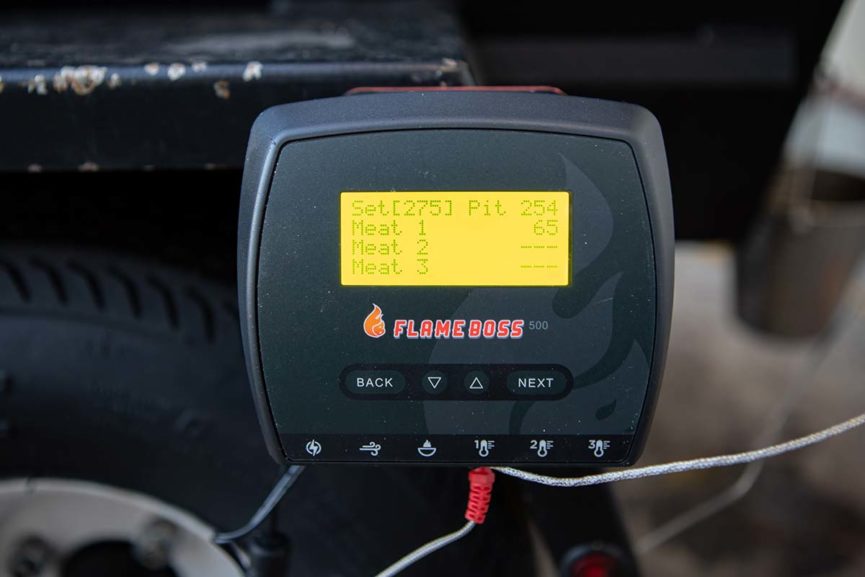
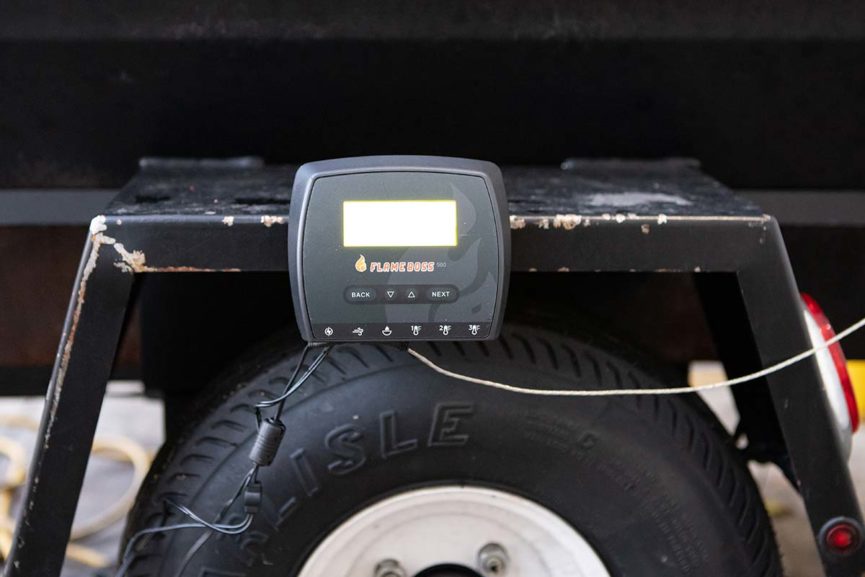
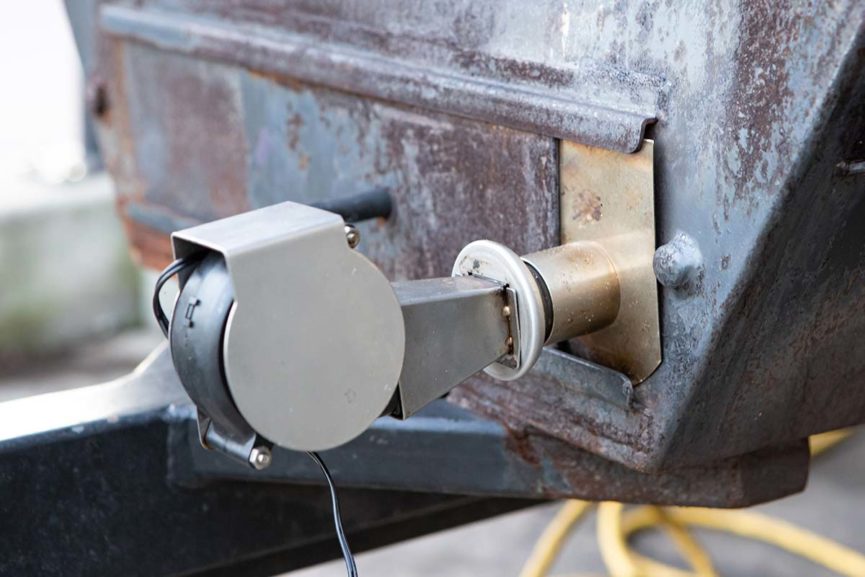
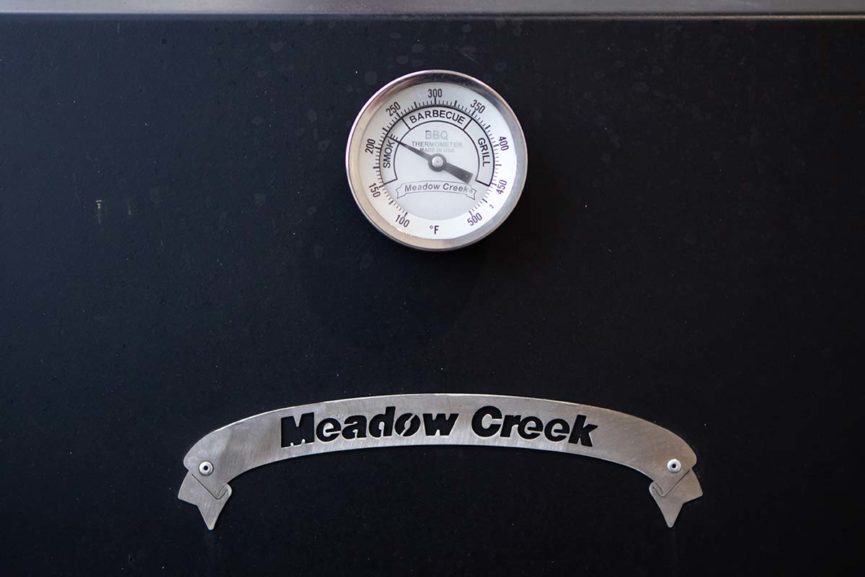
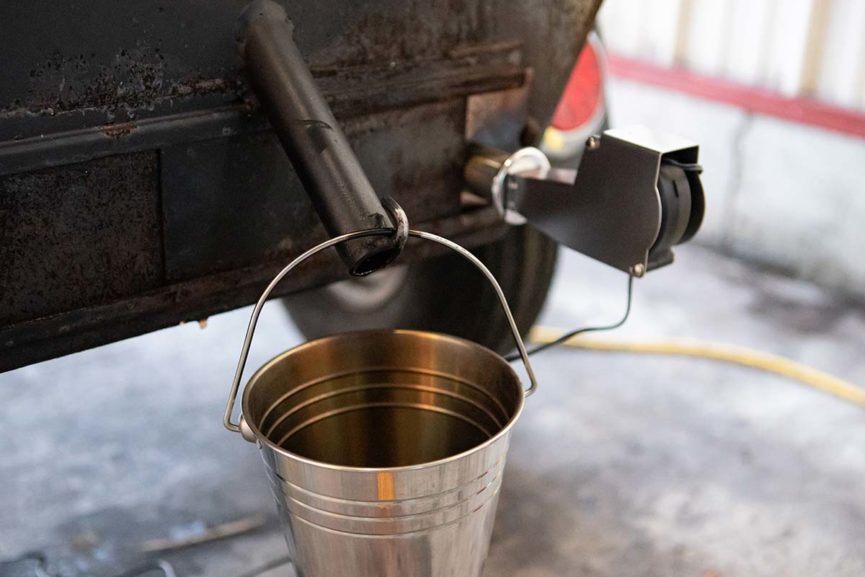
Important: Set the pig on the pig roaster with the hind end toward the drain end of the roaster. The other end of the roaster cooks hotter and the shoulders take longer to cook, so if you do this, the pig will cook evenly.
We put aluminum foil under the pig to make it easy to wrap during the cook.
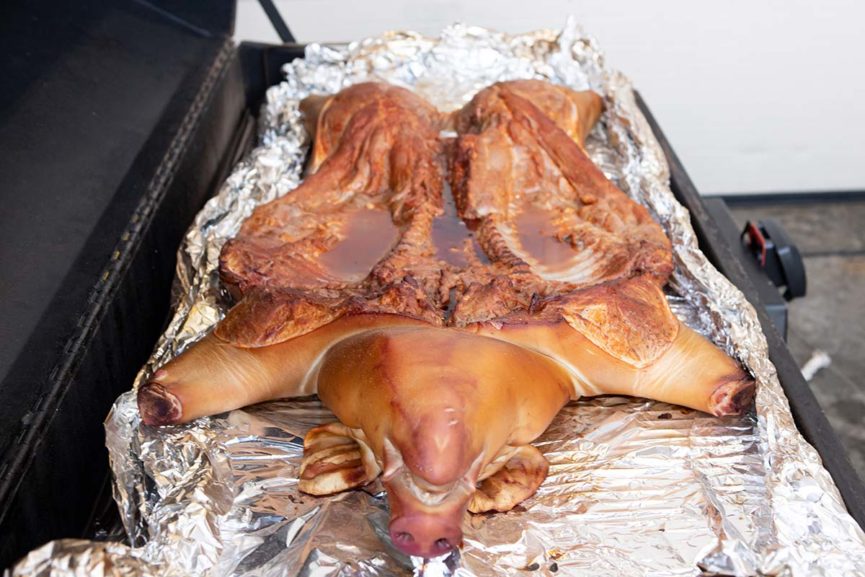

Cook the Pig
Once the pig is on, the main thing is to keep the roaster at the correct temperature. If you light it properly, this is easy to do, but because you're cooking with charcoal and wood, things can happen. If you let the roaster overheat, the pig can burn or a grease fire can erupt. If the roaster is not hot enough, the pig can take much longer to finish. The most common mistakes in cooking a whole pig is fire management and lack of planning when it will be done.
If you focus on temperature control and double check your timeline, time will be on your side and you will have a successful pig roast.
Once the internal temperature of the meat reaches 150 degrees F, cover it in foil. We use 18" wide heavy duty aluminum foil running lengthwise to make the job easy. The photo below shows what it looked like at 11:00 am just before we wrapped it.

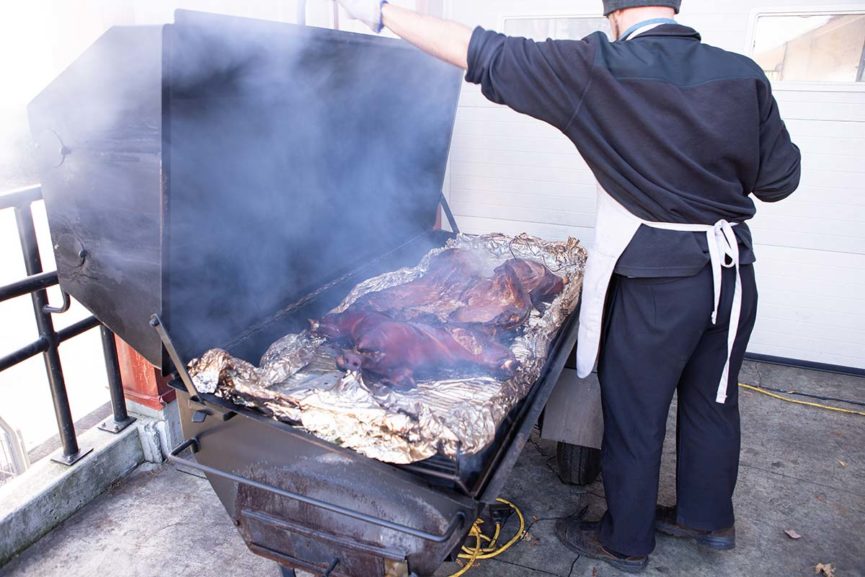
Wrapped in foil:
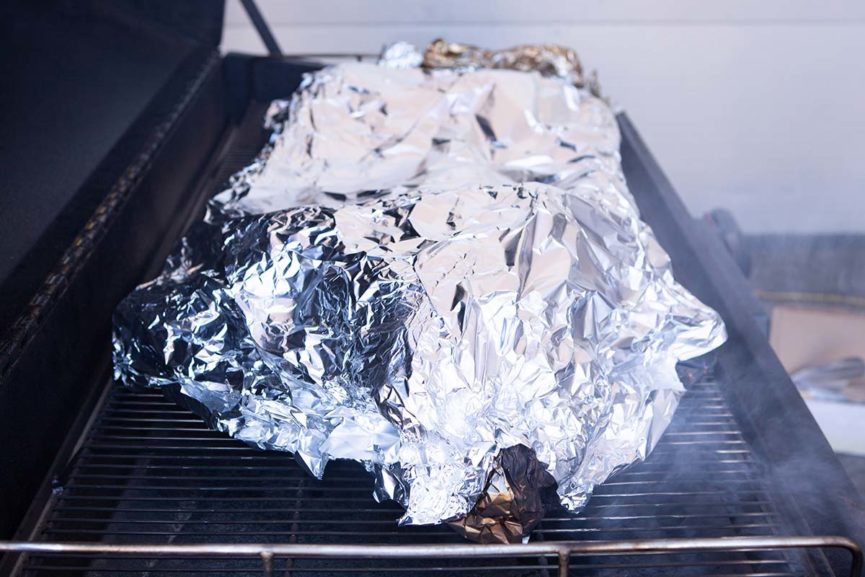
Let the pig cook until the meat reaches 195 degrees F. If you put the rear of the pig toward the drain end of the roaster, the shoulders and hams should finish at the right time.
Rest the Pig
Once the pig is up to temp and ready to remove from the roaster, uncover the pig and slit the sides to drain the accumulated greases.
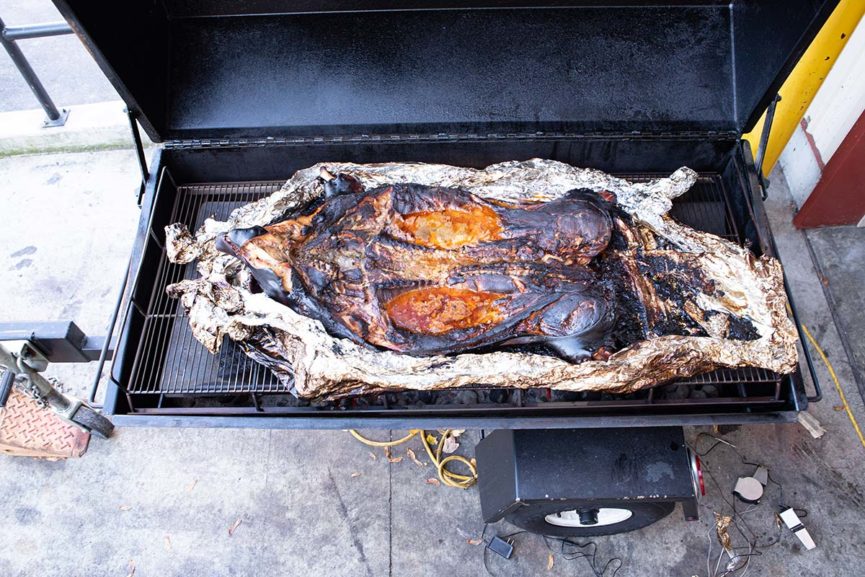

Draining the grease.
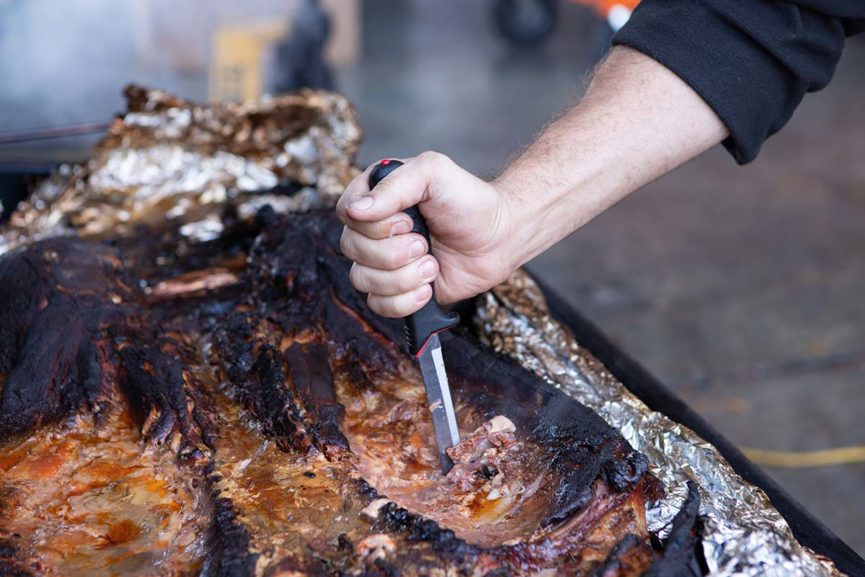
With a helper, lift the grate and pig off of the roaster and transfer it to a stainless steel or wooden table. Let it rest and cool for 30 minutes.

Resting the pig before picking it.
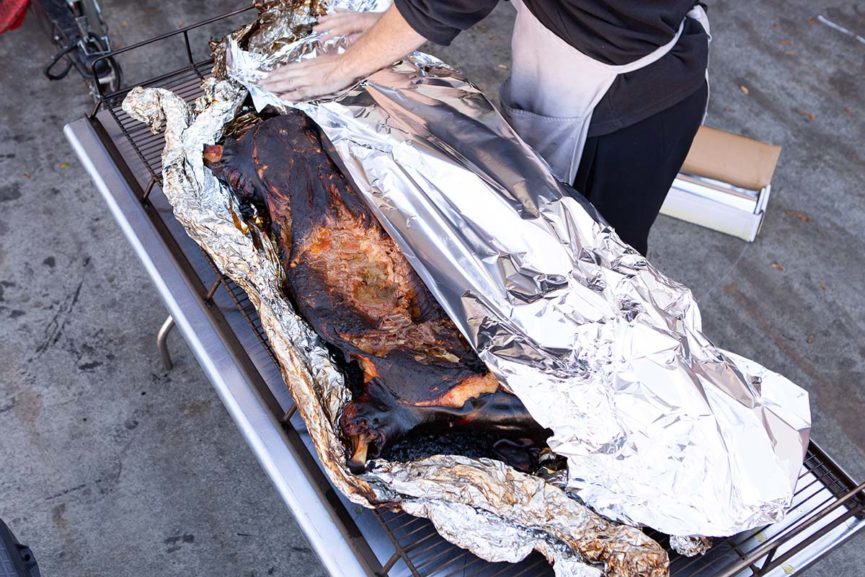
You can cover it with foil to keep it clean.

Pull the Meat and Serve
At this point, it's time to pick the pig! This step is easy to do, but a bit time consuming, so you'll probably want a helper. Simply dig in with gloved hands and pull out handfuls of meat, discarding the fat, bones, and other bits you don't want to serve. Pile it up in stainless steel or disposable pans to serve.
We use disposable latex gloves over cotton knit gloves to handle the meat. This combination of gloves gives you some insulation from the heat without making it hard to separate the meat from the fat. We carry gloves, warming boxes, chafing pans, and full and half size pans in our store.
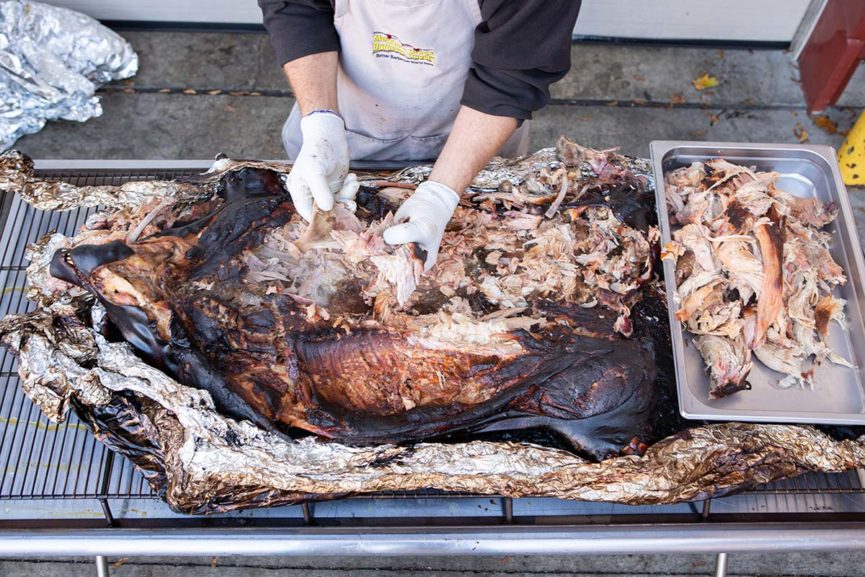
Picking the pig—the best part of the cook! The meat was juicy and delicious!
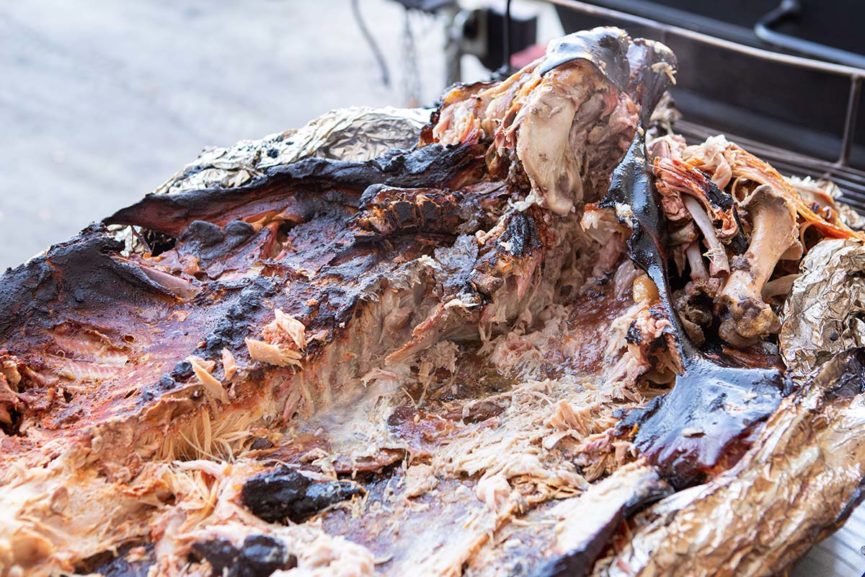
It was perfect from head to tail.
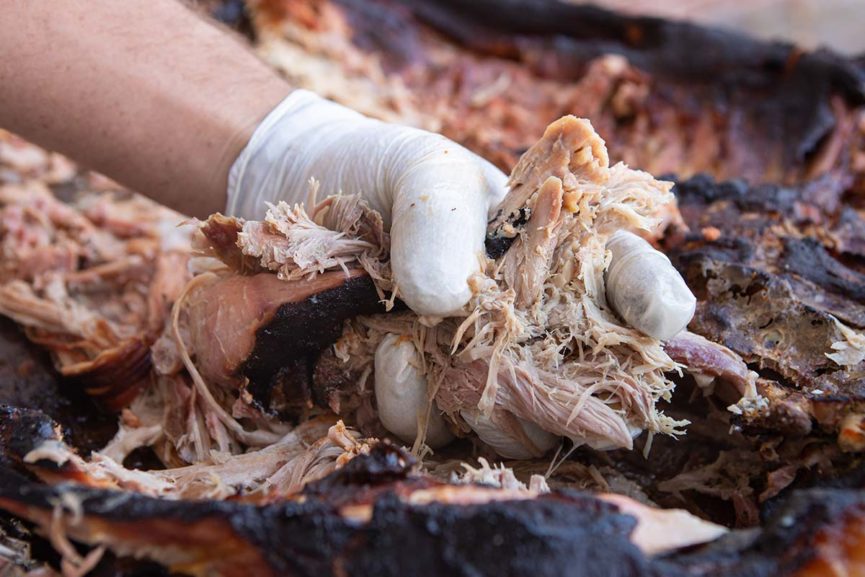
Juicy, tender pulled pork!
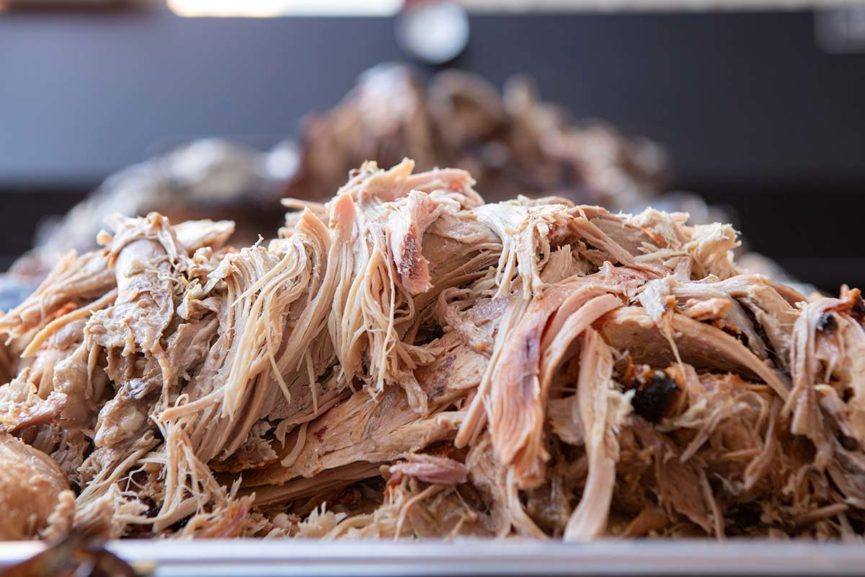
As you can see, it's not difficult to cook a whole pig if you have a Meadow Creek Pig Roaster and a local supplier for pigs. What's more, cooking a whole pig in front of your guests will definitely make a great impression and make you the hero of the party.
Still got questions? There is a lot more to be said about cooking whole pigs, so we invite you to come see us at 140 W. Main Street in New Holland, Pennsylvania during store hours (see bottom of this page) or call us at (717) 355-0779. Jesse and Matt have experience in cooking whole pigs and can expertly guide you in every part of the cooking process.
About the author: Lavern Gingerich is a writer and digital marketing manager for Meadow Creek Barbecue Supply.

